Catania
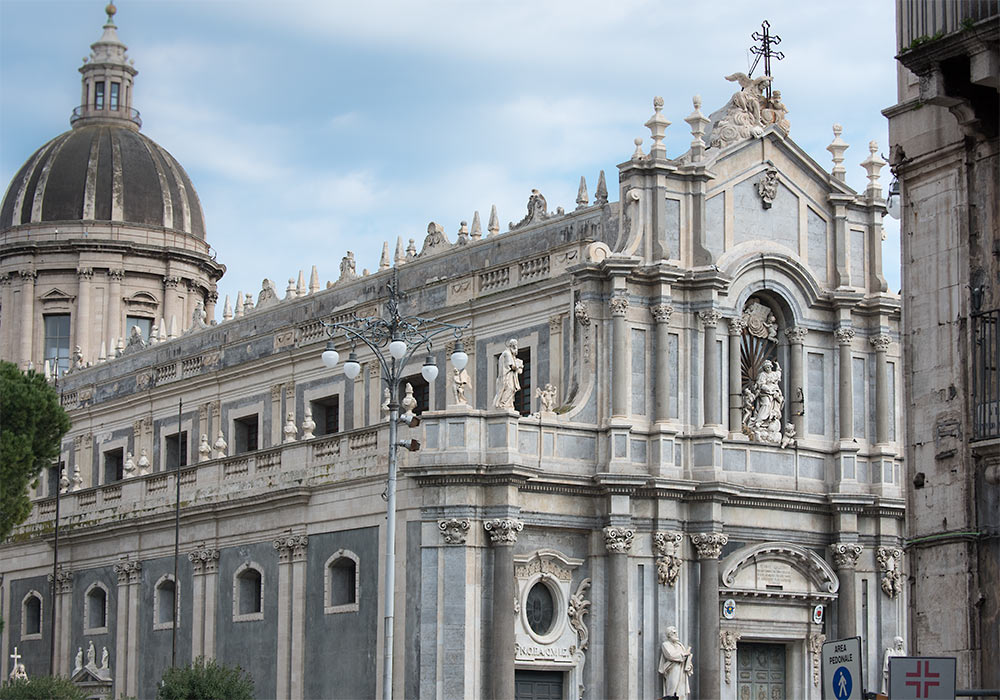
The magnificent cathedral in Catania, founded by Count Roger in 1094, 23 years after the Normans took the town from the Arabs.
Catania is home to a population of 297,647 (2023) within the city proper, while its metropolitan area houses 1,068,693 residents, making it the seventh-largest metropolitan area in Italy. The city itself ranks as the tenth-largest municipality in the country.
Nestled on Sicily's eastern coast at the foot of Mount Etna, Catania is a city steeped in history, culture, and resilience. Catania is home to Sicily’s busiest airport (Italy's fourth-largest), and serves as a vital industrial and logistical hub for the region. The city's central location and robust transportation infrastructure make it a key gateway to the Mediterranean.
Founded by Chalcidian Greeks in the 8th century BC, Catania has endured a history marked by natural disasters.
Catania was conquered by the Romans in 263 BCE, becoming Catina. Over the centuries, it suffered repeated destruction due to natural disasters, including earthquakes and volcanic eruptions (notably in 251, 1169, 1669, and 1693).
Despite these challenges, the city has flourished, particularly during the Renaissance, when it became one of Italy's foremost cultural and political centers and established Sicily’s first university in 1434.
Today, Catania showcases its rich heritage through its UNESCO-listed historic center, renowned for its grand late-baroque architecture built after the 1693 earthquake. The city has been home to some of Italy's most celebrated artists, composers, and writers, such as Vincenzo Bellini and Giovanni Verga, adding to its cultural prestige. With a metropolitan population exceeding one million, Catania balances its historical significance with its role as a modern commercial powerhouse, embodying the dynamic spirit of Sicily.
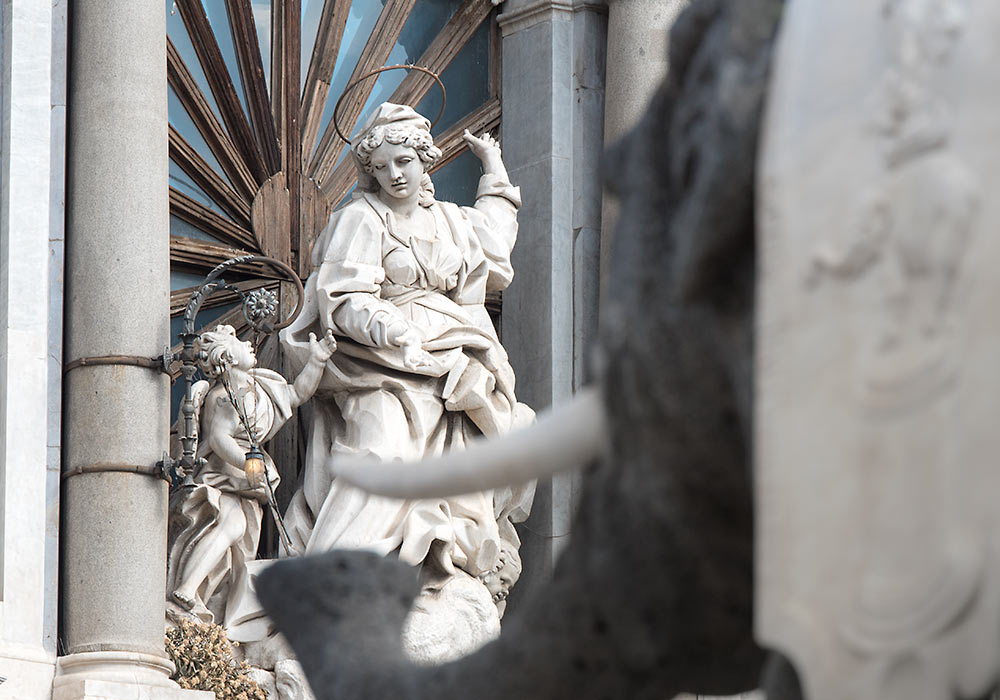
The Cathedral in Catania. To the right the iconic elephant made of lava in the middle of Piazza Duomo, the symbol of Catania.
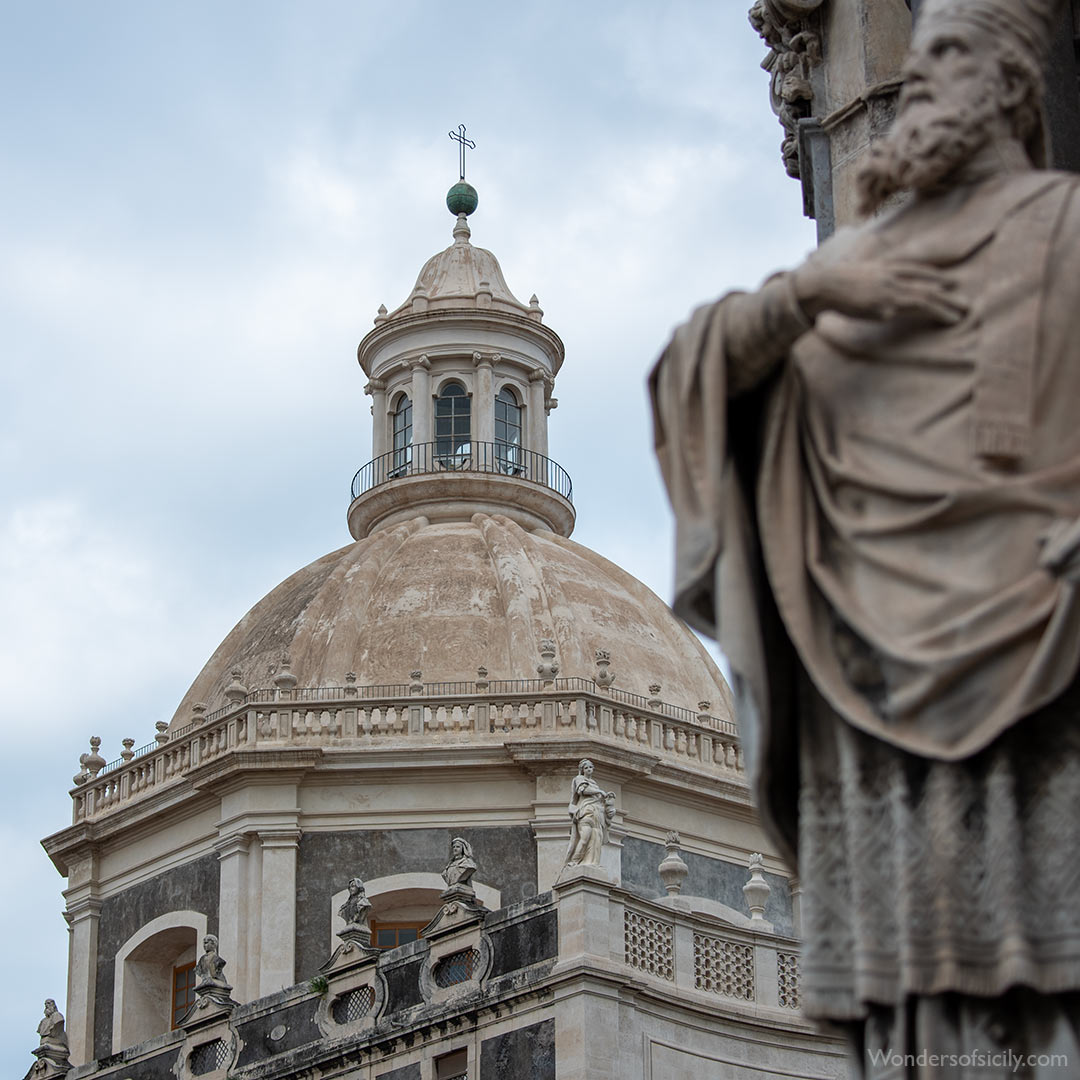
The cathedral's cupola was designed by Battaglia. It dates from 1804.
Palazzo Biscari
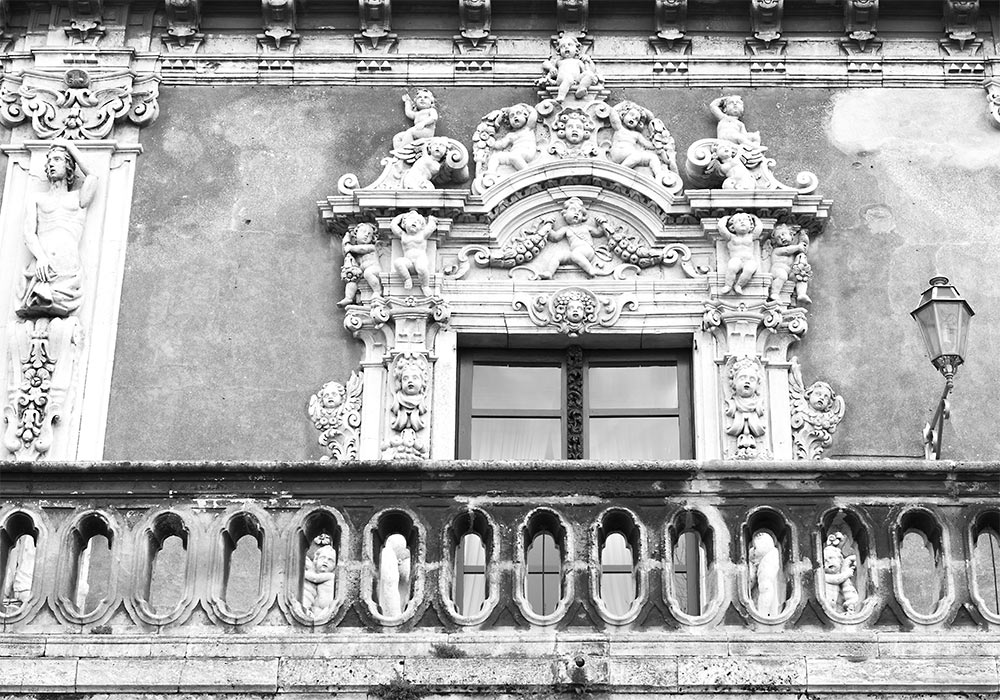
The magnificent exterior of Palazzo Biscari, Catania.
Johann Wolfgang von Goethe visited Palazzo Biscari in May 1787. In his diary he writes: “We were introduced to the Prince who, in an act of special deference, showed us his collection of coins… After having dedicated to this task a certain amount of time, in any case always too little, we were about to take our leave when he wished to introduce us to his mother, in whose apartment were exhibited other miniature works of art… She herself opened for us the glass case in which were housed objects of carved amber… These objects, like the carved seashells which had been worked in Trapani and other exquisite pieces of ivory, were of particular delight to the gentlewoman, who found the means to tell us in passing more than one pleasing anecdote. The prince alone entertained us over more serious matters and so I passed several instructive and pleasant hours. In the meantime the princess had understood that we were German, for which she asked us news of the von Riedesels, the Bartels and the Munters, all of whom were known to her and of whom she had also learned to distinguish and appreciate by character and dress. We reluctantly took our leave of her, and she herself seemed unwilling to let us depart.” J. W. Goethe: Italian Journey: 1786-1788 as cited on www.palazzobiscari.com
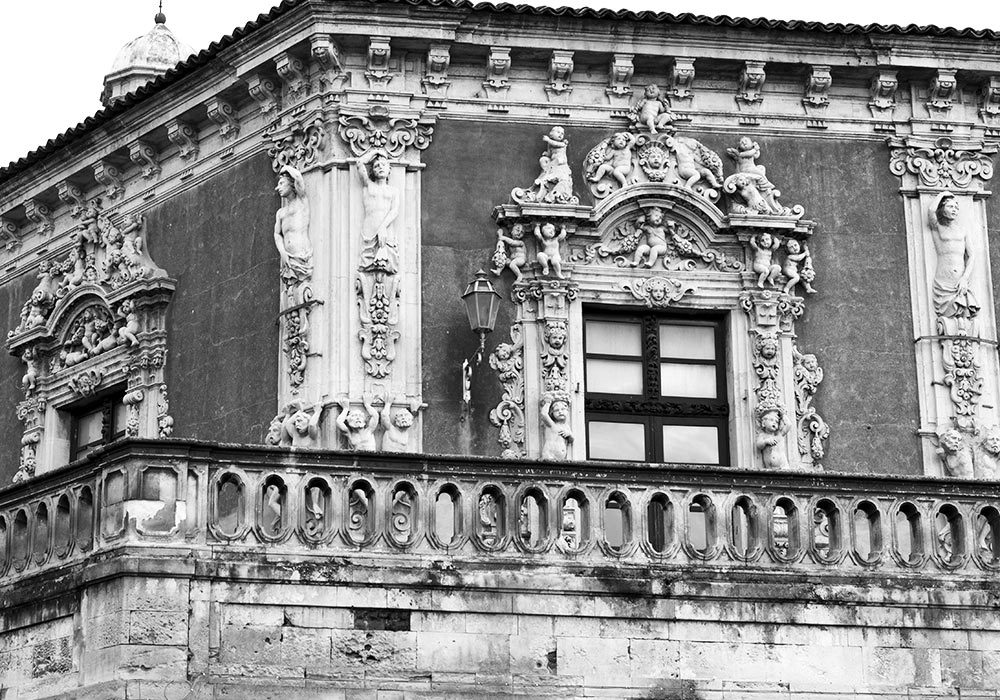
Palazzo Biscari, Catania.
3D animation of the Roman Amphitheatre of Catania (Virtual Reconstruction)
The Cathedral
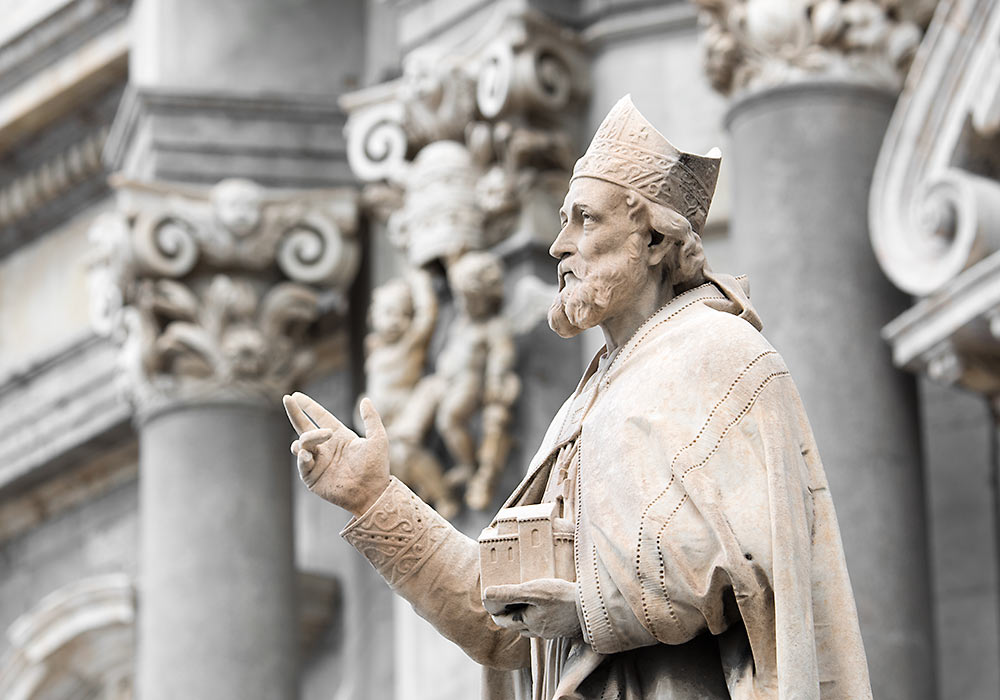
Statue outside the cathedral (duomo).
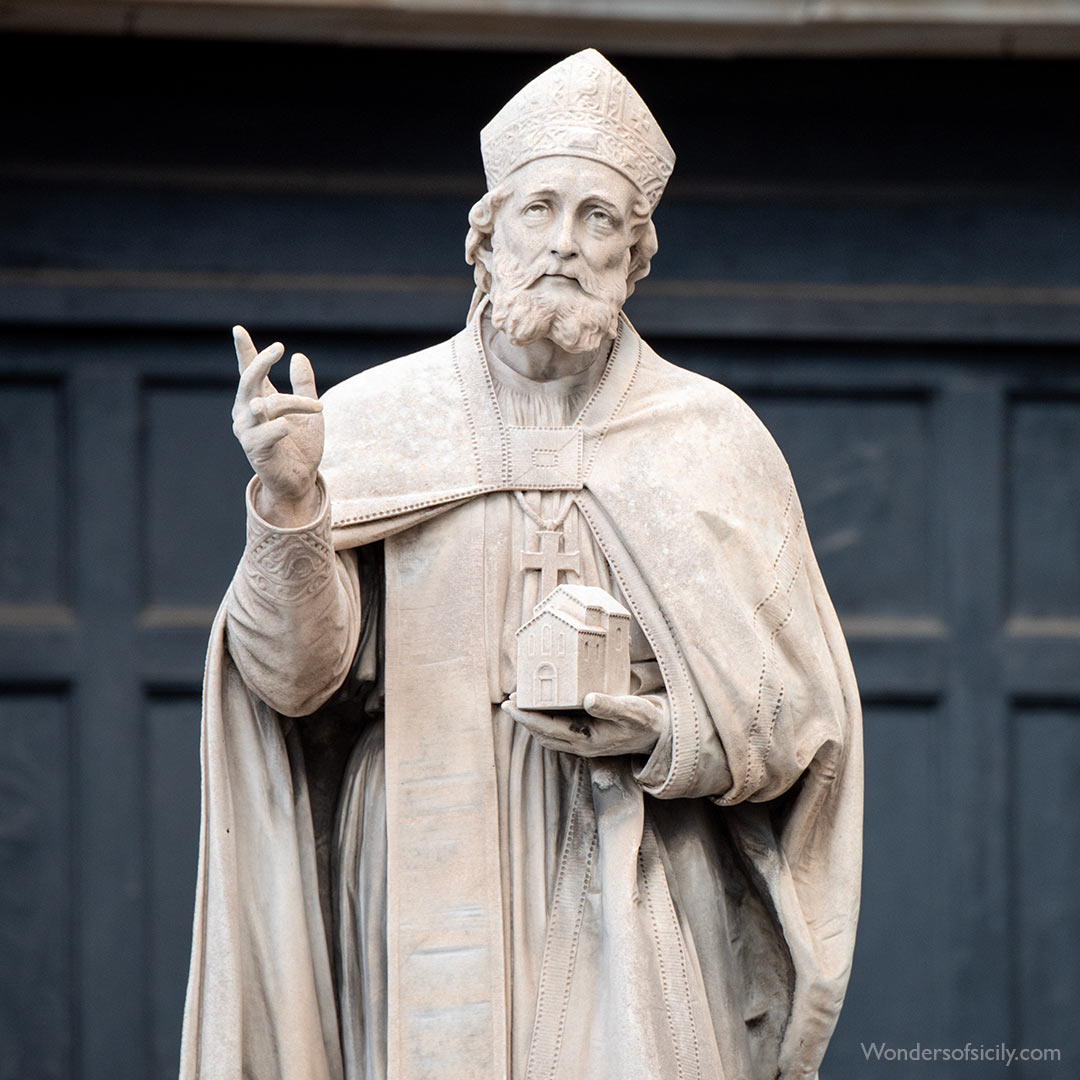
Statue outside the cathedral (duomo).
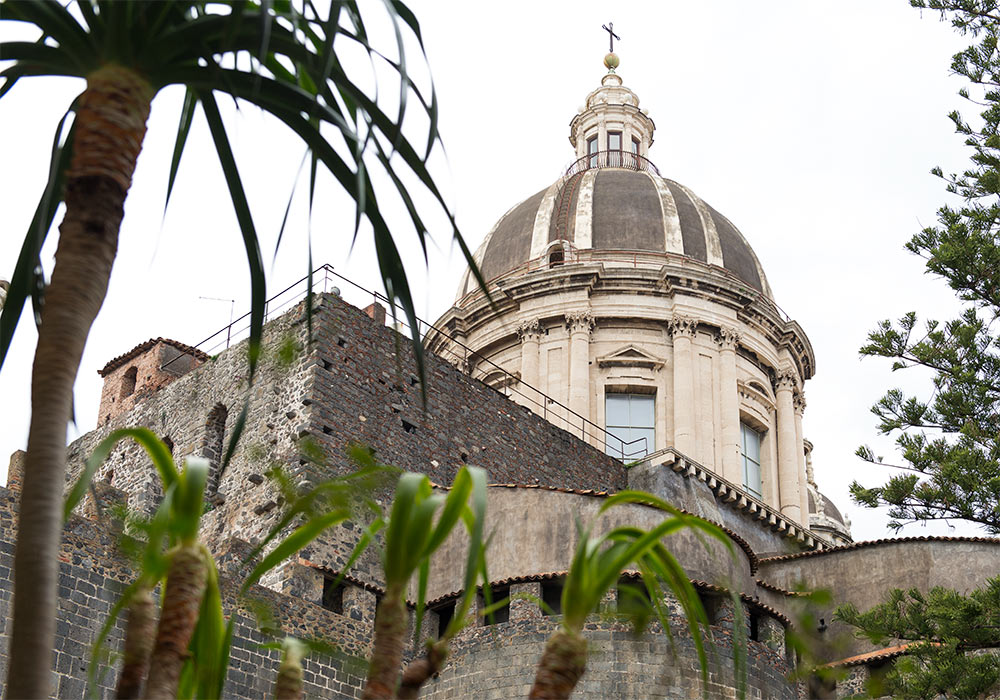
If you walk around the cathedral and enter the gate at no. 159 Via Vittorio Emanuele, you can see the structure of the original Norman church.
The Basilica della Collegiata
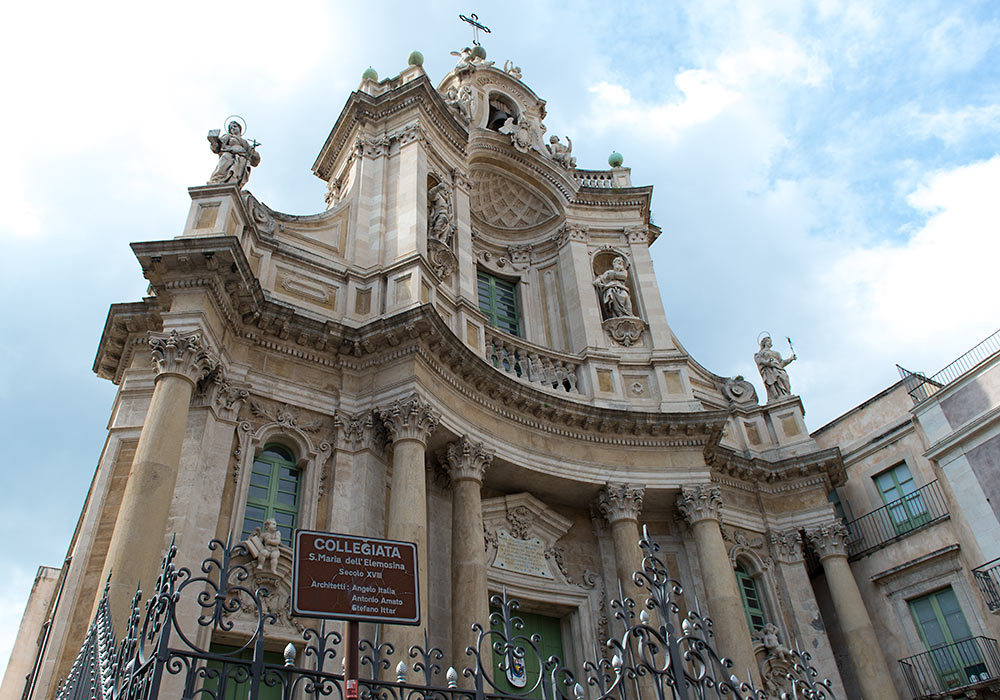
The theatricality of the Sicilian Baroque is wonderful. This is the undulating facade of the royal chapel Collegiata (c. 1768, aka The Basilica della Collegiata and Santa Maria dell'Elemosina). Architects: Stefano Ittar, Angelo Italia and Antonio Amato.
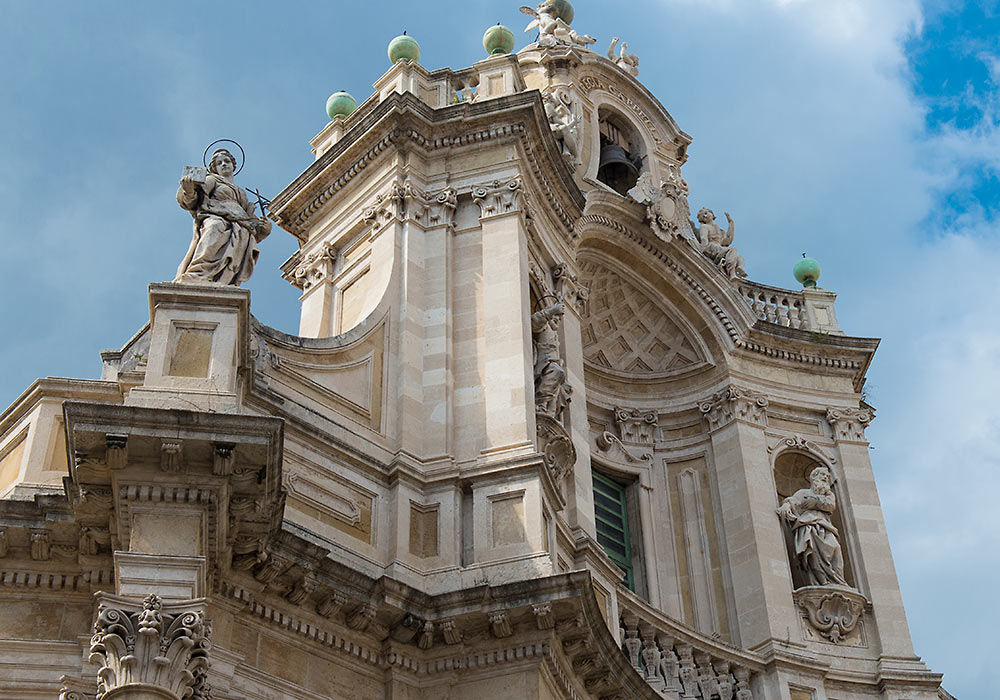
Detail of the undulating facade of the royal chapel Collegiata (c. 1768, aka The Basilica della Collegiata and Santa Maria dell'Elemosina).
Piazza Duomo
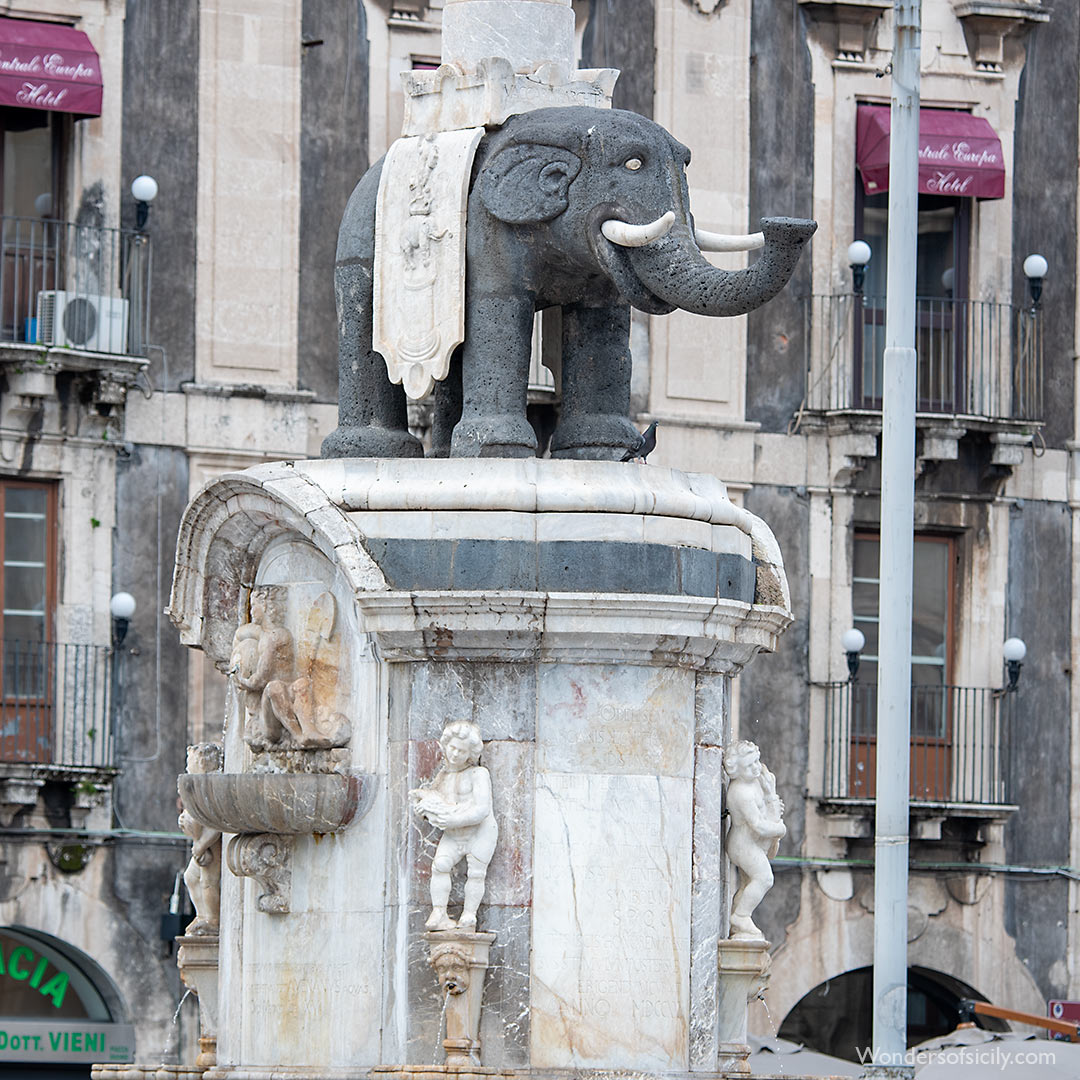
The iconic elephant made of lava in the middle of Piazza Duomo, the symbol of Catania. The Egyptian obelisk on the elephant's back was erected by Giovanni Battista Vaccarini in 1736. (You can see Vaccarini's "signature" just above the elephant's head.)
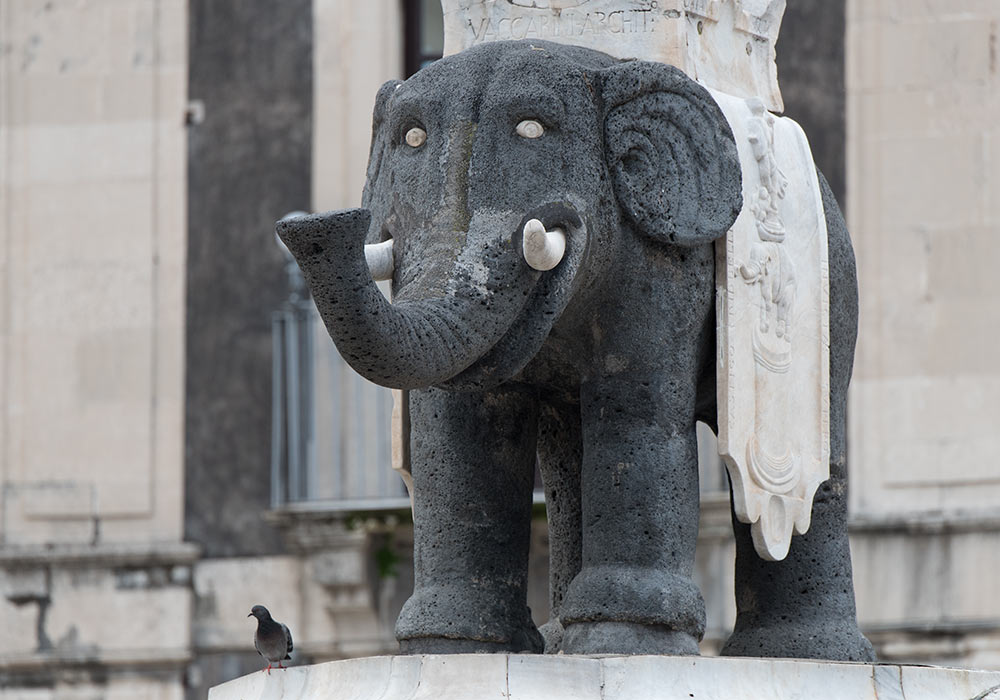
The iconic elephant made of lava in the middle of Piazza Duomo.
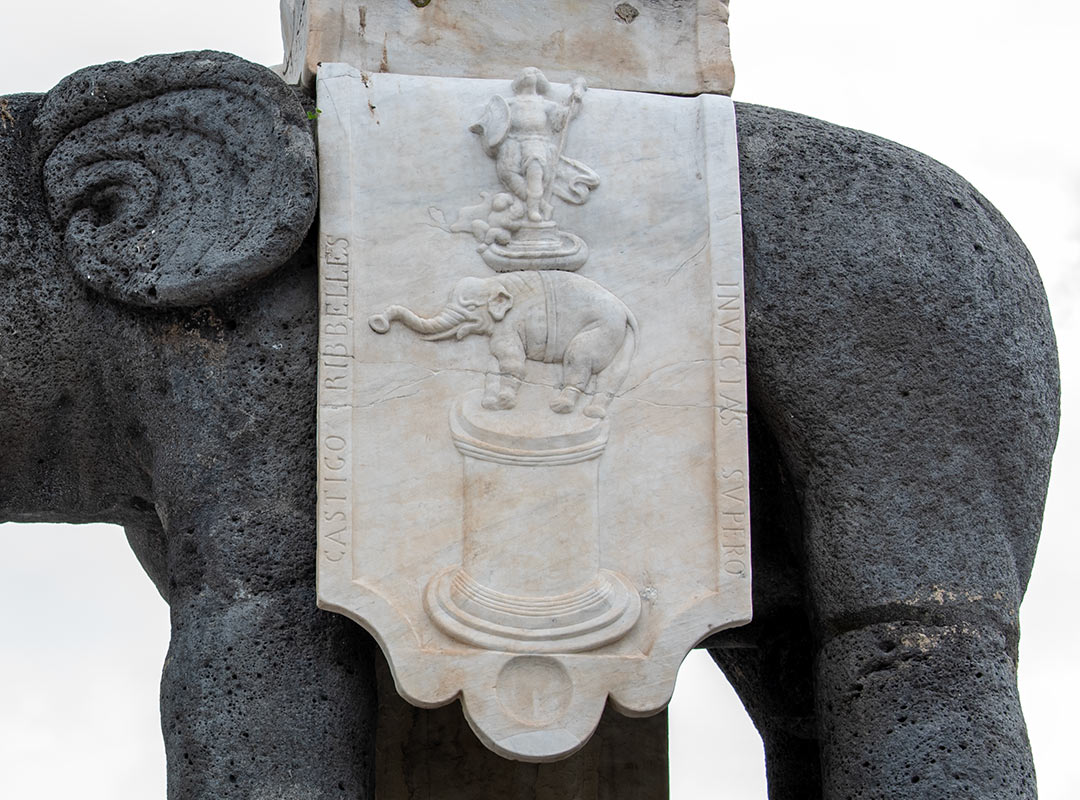
CASTIGO REBBELLES INVICIAS SVPERO (I punish rebels, I overcome envy.)
Saint Agatha
Legend has it that Agatha was born either in Catania or Palermo, Sicily, into a noble Christian family. As a child, she dedicated her virginity and her life to Christ. The governor Quintianus, an evil and depraved man of low birth, became infatuated with the extraordinarily beautiful and noble virgin. However, she rejected his advances. Enraged by her refusal, Quintianus exploited the emperor’s edict against Christians and had her brought before his court. Agatha was condemned as a Christian and initially placed in the custody of a woman named Afrodisia, whose name (or possibly nickname) aptly reflected her nature. Afrodisia ran a brothel with her six (or possibly nine) daughters or assistants. They attempted to corrupt Agatha, but their efforts were in vain. Despite remaining there for thirty days, she miraculously preserved her chastity. (This story closely parallels the legend of Saint Agnes.) Frustrated by her resistance, Quintianus handed Agatha over to the torturers. The legend then delves into graphic details about her suffering, which some have described as "religious pornography." She was stretched on a rack, with her arms and legs dislocated, and burned with torches. Eventually, her torturers cut off her breasts and presented them on a platter. (A similar detail appears in the story of the martyrdom of Saint Eulalia of Mérida.) The story goes that the Apostle Peter appeared to Agatha in a vision and miraculously healed her wounds. Yet, even this miracle did not move Quintianus. Four days later, the torture resumed. Agatha was eventually rolled onto glowing coals mixed with shards of pottery, effectively roasting her alive. Finally, after enduring such horrific suffering, Agatha succumbed to her injuries. At the moment of her death, Mount Etna erupted violently. Earthquakes frightened the governor’s horses, causing them to panic and trample the torturer to death. The lava flow was said to have been halted when Agatha's silk veil was held up against the advancing volcanic torrent. (Another version of the story claims that the eruption occurred exactly one year after Agatha’s death.)
Devoti Tutti takes viewers on a journey to Catania, Sicily, where every year since 251 A.D. the citizens celebrate Saint Agatha through male devotional ecstasy. Inspired by the Italian neo-realist films of the 1950s, the documentary uses these citizens—a 13-year-old street girl, a weathered fisherman—to retell the violent story of Agatha’s breast-martyrdom from a feminist perspective, instilling Agatha with a unique and never-before heard voice.
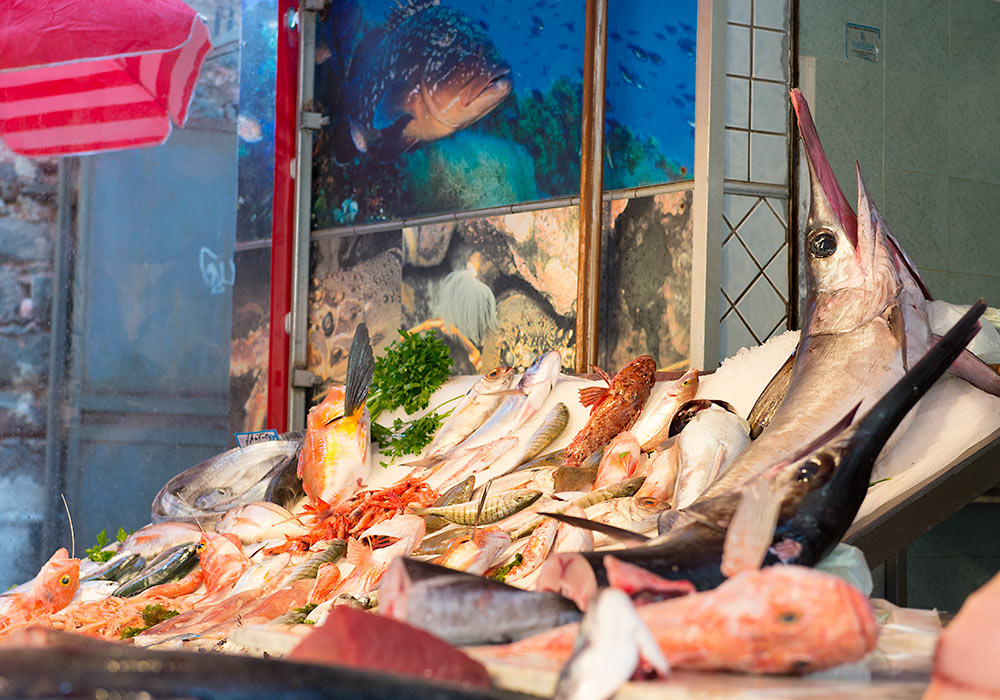
Fish stand on the market in Catania.
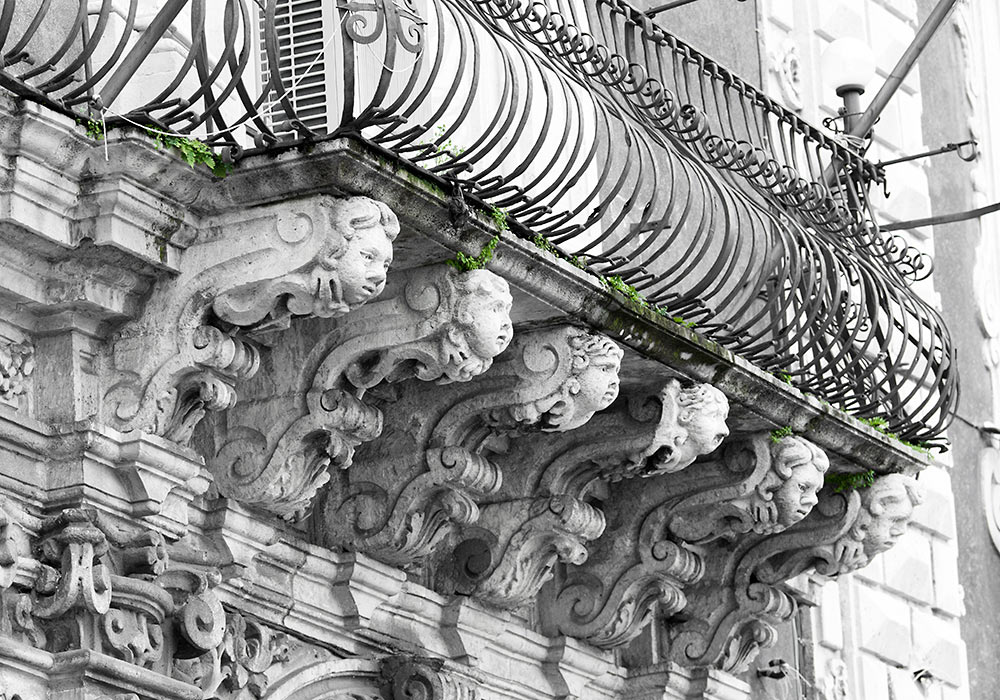
Baroque balcony in Catania.
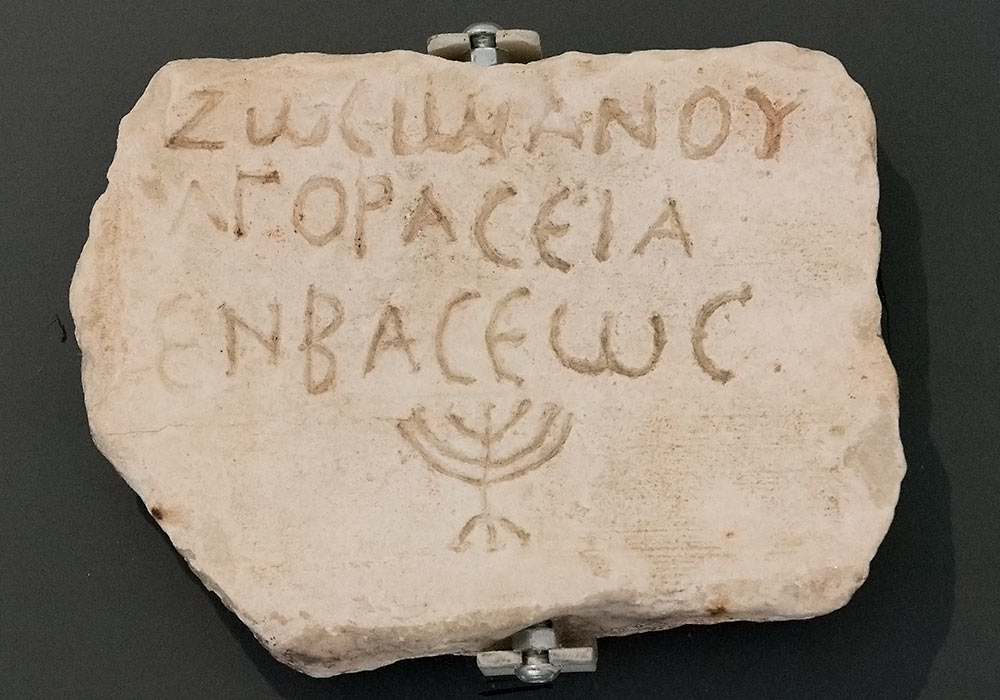
Marble slab with Hebrew funerary inscription (4-5th century AD), found in Catania. Now in the Archeological Museum, Palermo. The text above the seven-branched candelabrum reads: "Of Zosimaianos. Purchase of the tomb."
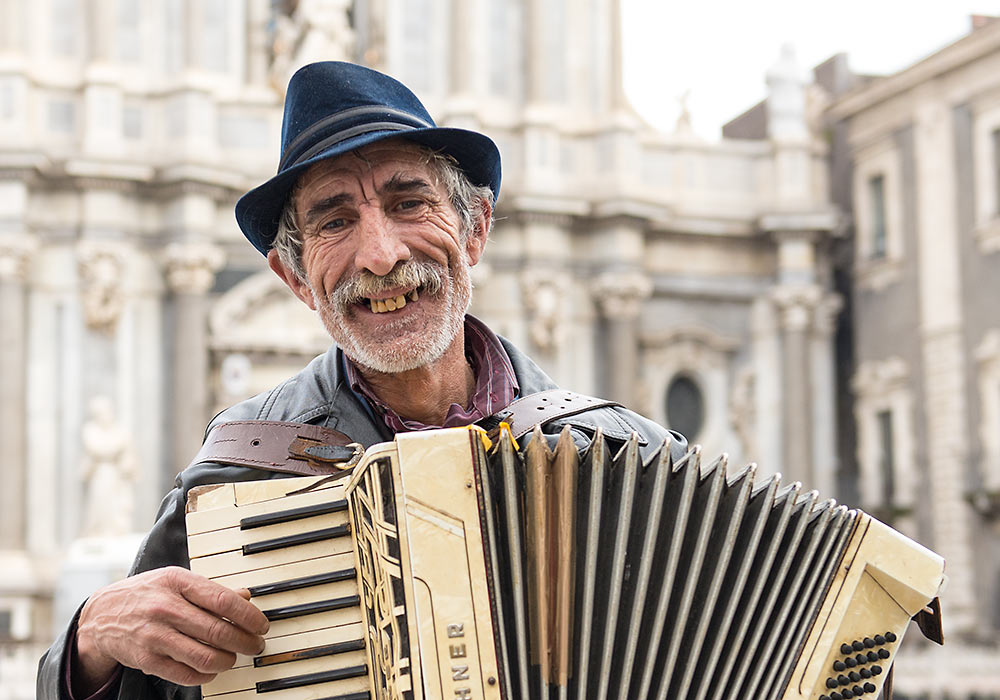
Life in Sicily can be hard, as the smile on the face of this man in front of the cathedral in Catania shows.
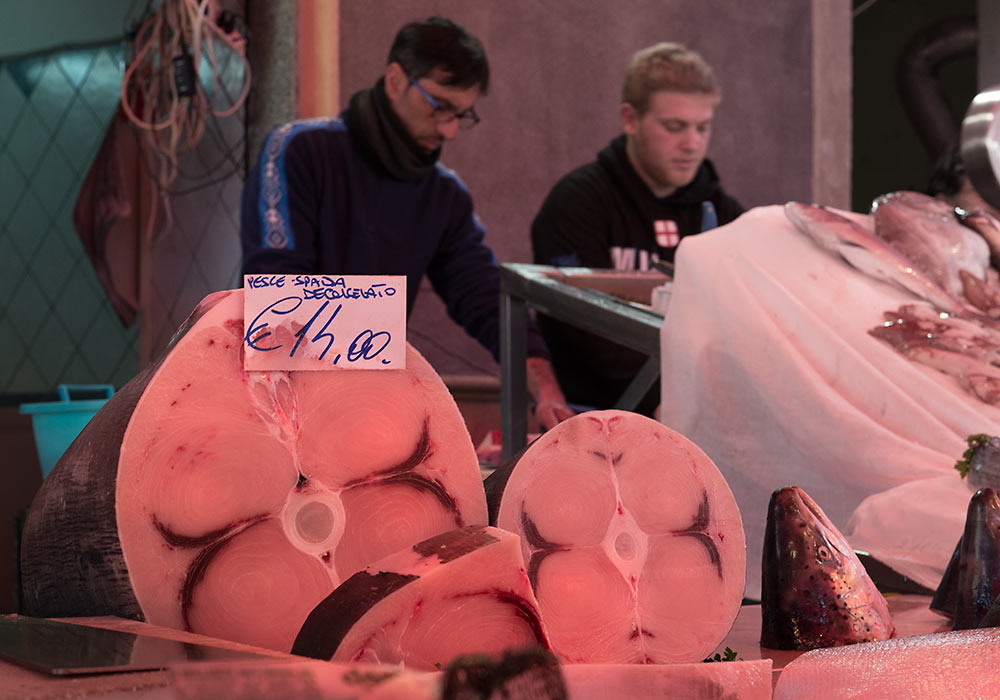
Swordfish for sale on the market in Catania.
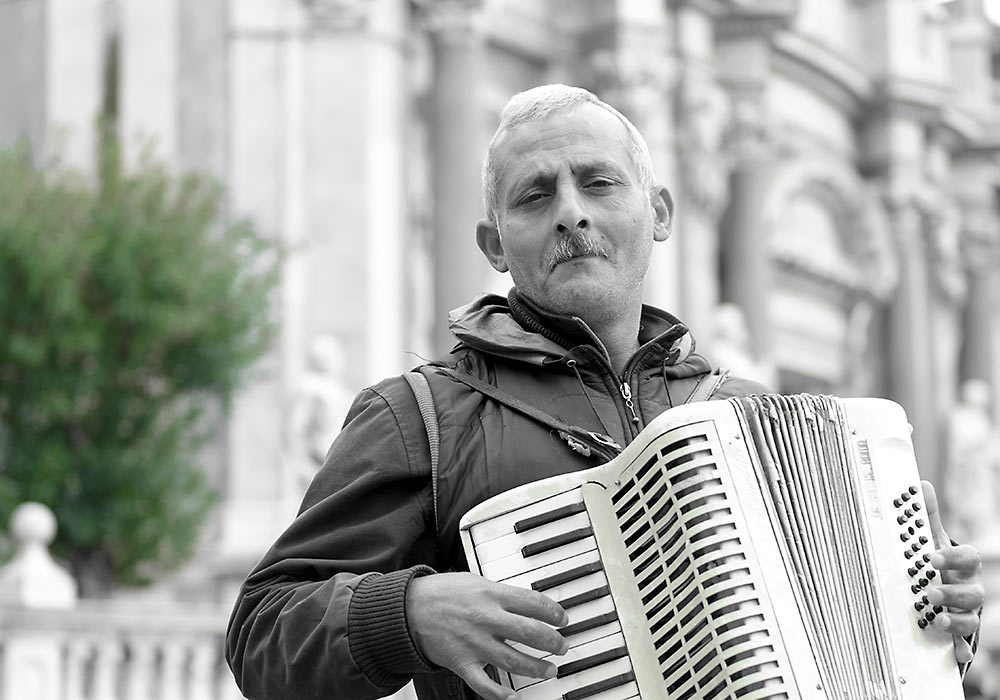
Beggar in front of the cathedral in Catania.
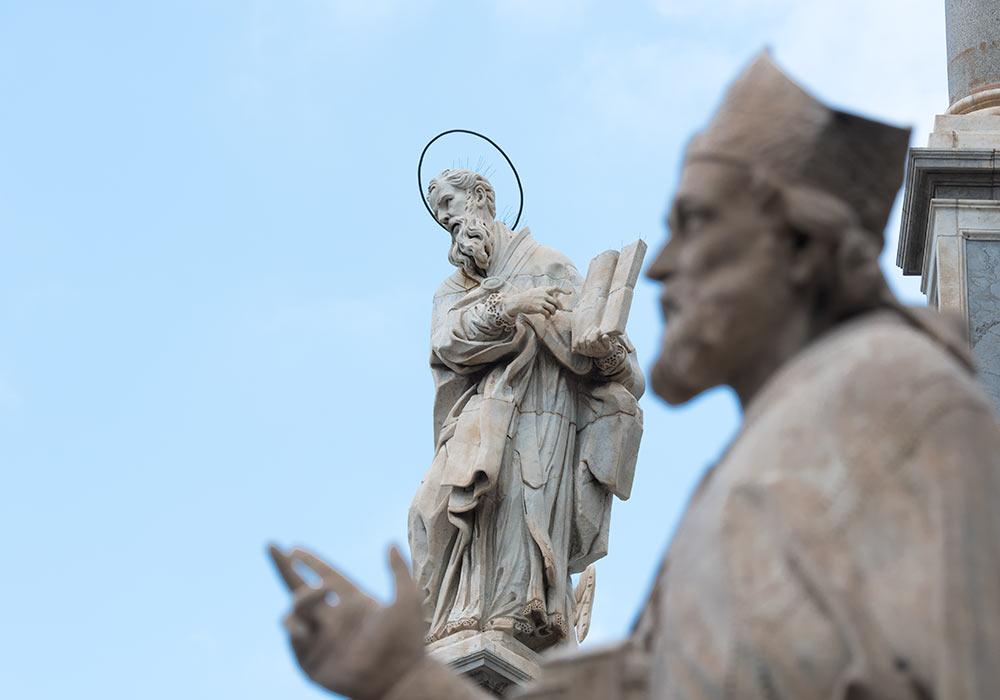
Statues outside the cathedral in Catania.
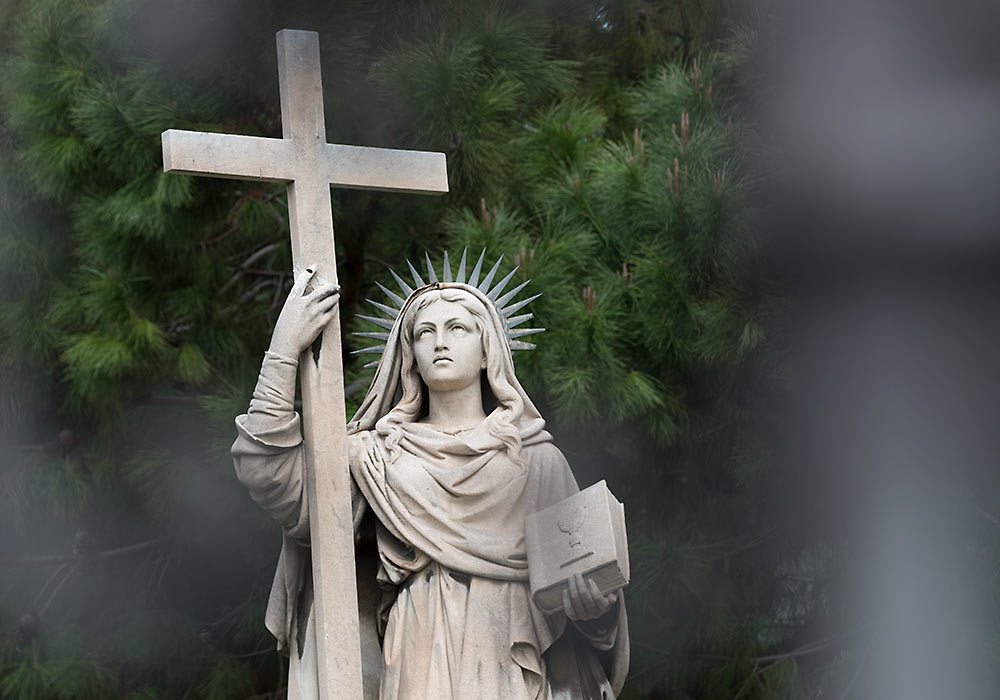
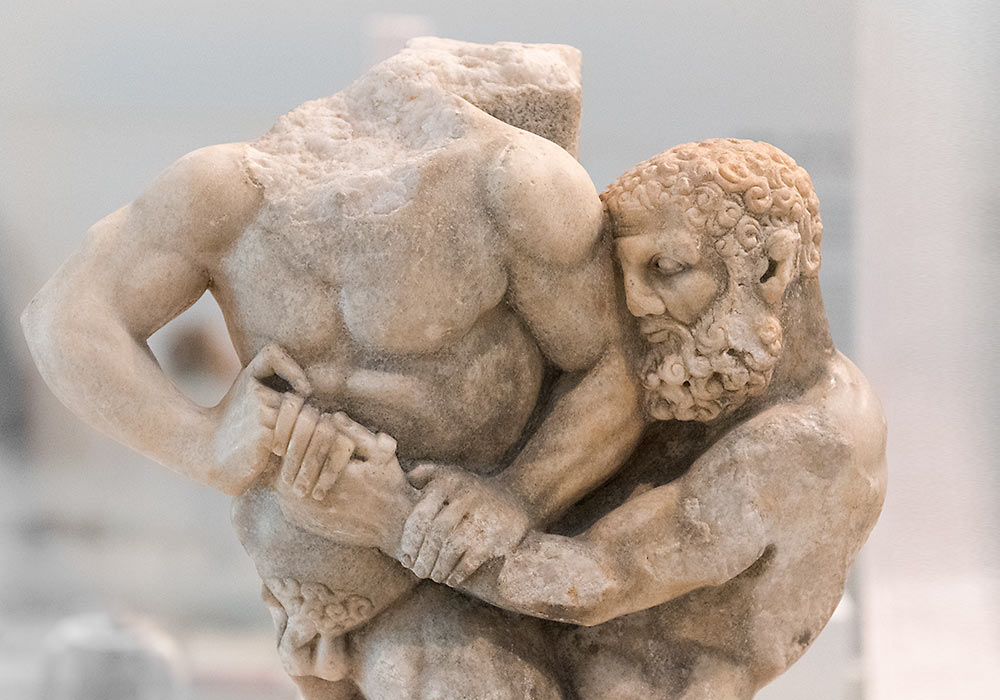
Hercules wrestling with Antaeus. Marble support for table-top. Greek, 200-100 BC. Found off the coast of Catania. Ashmolean Museum / Museo Civico 'Castello Ursino', Catania. The cartibulum was used in grand Roman villas to display the family's silver plate.
Part of the exhibition Storms, War & Shipwrecks - Treasures from the Sicilian Seas at the Ashmolean Museum, June-September 2016.
The late baroque towns of the Val di Noto in South-Eastern Sicily that are inscribed on the UNESCO World Heritage List
The late baroque towns of the Val di Noto in South-Eastern Sicily that are inscribed on the UNESCO World Heritage List are Caltagirone, Militello Val di Catania, Catania, Modica, Noto, Palazzolo, Ragusa and Scicli. These towns were all rebuilt after the earthquake in 1693 on or beside towns. According to UNESCO, they represent a considerable collective undertaking, successfully carried out at a high level of architectural and artistic achievement. Keeping within the late Baroque style of the day, they also depict distinctive innovations in town planning and urban building.
The late baroque towns inscribed on the UNESCO World Heritage List represents the culmination and final flowering of Baroque art in Europe. The exceptional quality of the late Baroque art and architecture in the Val di Noto lies in its geographical and chronological homogeneity, as well as its quantity, the result of the 1693 earthquake in this region. The towns were all in existence in medieval times, characteristically around a castle and with monastic foundations.
Sicilian Sites on UNESCO's World Heritage List
- Agrigento: Archaeological Area of Agrigento (UNESCO)
- Aeolian Islands: Isole Eolie. The group consists of seven islands (Lipari, Vulcano, Salina, Stromboli, Filicudi, Alicudi and Panarea) and five small islets (Basiluzzo, Dattilo, Lisca Nera, Bottaro and Lisca Bianca) in the vicinity of Panarea. (UNESCO)
- Caltagirone (UNESCO)
- Catania (UNESCO)
- Cefalù Cathedral
- Militello Val di Catania (UNESCO)
- Modica (UNESCO)
- Monreale Cathedral
- Mount Etna (UNESCO)
- Noto (UNESCO)
- Palermo: Palazzo dei Normanni (The Norman Palace)
- Palermo: Cappella Palatina (The Palatine Chapel in the Norman Palace)
- Palermo: Church of San Giovanni degli Eremiti
- Palermo: Church of Santa Maria dell'Ammiraglio (also known as the Martorana)
- Palermo: Church of San Cataldo
- Palermo: Cathedral of Palermo
- Palermo: The Zisa Palace (La Zisa)
- Palermo: The Cuba Palace (La Cuba)
- Palazzolo Acreide (UNESCO)
- Ragusa (UNESCO)
- Scicli (UNESCO)
- Syracuse and the Rocky Necropolis of Pantalica (UNESCO)

